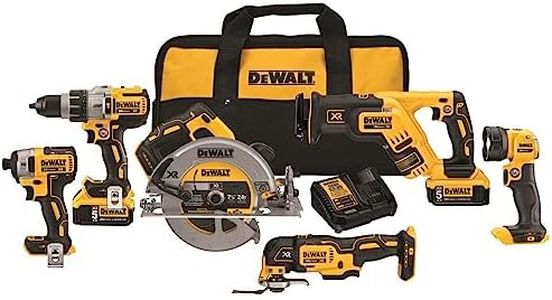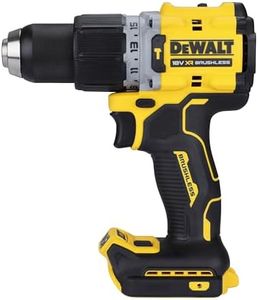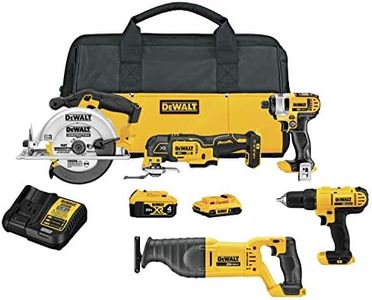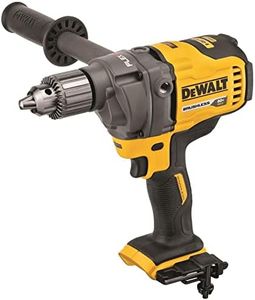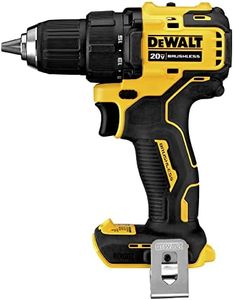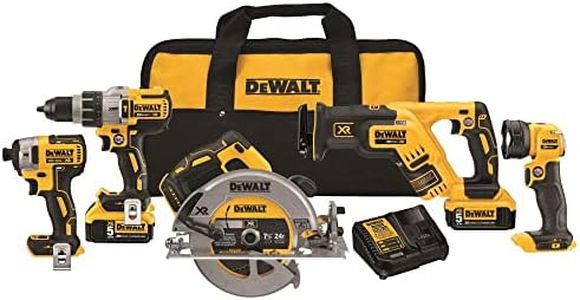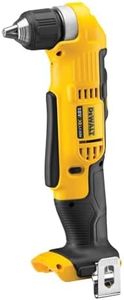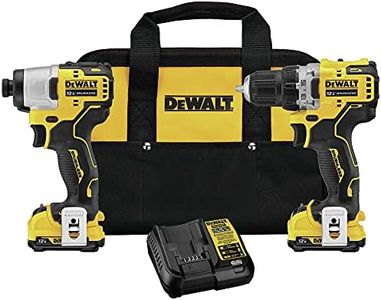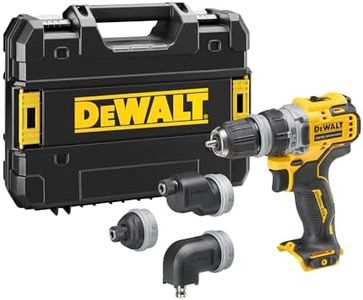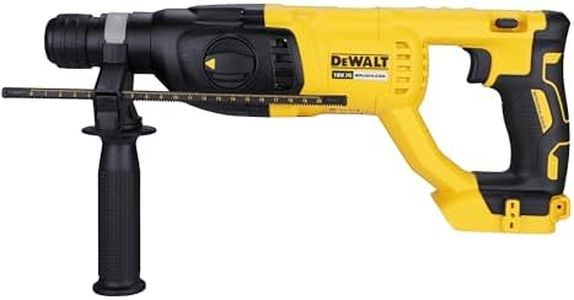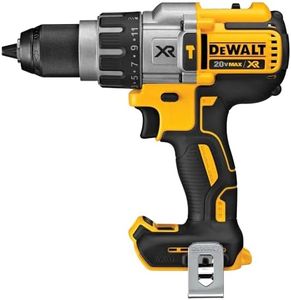We Use CookiesWe use cookies to enhance the security, performance,
functionality and for analytical and promotional activities. By continuing to browse this site you
are agreeing to our privacy policy
10 Best Dewalt Cordless Drills
From leading brands and best sellers available on the web.Buying Guide for the Best Dewalt Cordless Drills
Choosing the right cordless drill involves more than just picking a brand you recognize. The best drill for you will depend on how you plan to use it—whether it's for occasional home repairs, DIY projects, or more demanding professional tasks. Understanding the key features and specifications will help you match a drill’s capabilities to your own needs, making your purchasing decision much easier and more effective.VoltageVoltage refers to the power output of the drill's motor, usually measured in volts. Higher voltage drills offer more power and are capable of handling tougher jobs like drilling into masonry or thick wood, while lower voltage drills are lighter and easier to handle, suitable for assembling furniture or light repairs. Common voltage ranges are 12V (good for light projects), 18V/20V (great all-rounders for most users), and higher (for heavy-duty tasks). To choose the right voltage for you, think about what kind of projects you’ll be doing most—occasional and light users can go for lower voltage for comfort, while frequent DIYers or professionals should consider mid to high voltage for versatility and power.
Battery Type and Capacity (Ah)Modern cordless drills typically use lithium-ion batteries, which are lighter, last longer, and charge faster than older battery types. Amp-hours (Ah) measure the battery's capacity—how long it can run before needing a recharge. Higher Ah means more running time between charges, but also a heavier battery. For casual users, 1.5Ah to 2Ah is usually enough, but if you expect to use the drill for longer periods or on bigger projects, look for 3Ah or above. Your usage patterns should guide you—the more often and longer you use the drill, the more capacity you’ll want.
Chuck SizeThe chuck is the part of the drill that holds the drill bits, and its size determines the largest bit you can use. Most common sizes are 3/8-inch, which covers most home tasks, and 1/2-inch, which fits larger bits for more demanding work. If you’ll mostly use the drill for small repairs or furniture assembly, a 3/8-inch chuck is likely enough. For general DIY or heavier work, a 1/2-inch chuck increases your tool’s versatility.
Speed SettingsCordless drills have different speed settings, indicated by their RPM (rotations per minute). Lower speeds provide more torque for driving screws, while higher speeds are better for drilling holes. Many drills offer variable speeds or multiple gear settings, often labeled as two-speed or multi-speed. If you’re planning to do a variety of tasks—like both drilling and screwdriving—choose a drill with at least two speed settings to adapt to each job.
Torque SettingsTorque is the amount of turning force the drill can apply and is often adjustable on cordless drills via a dial or ring. Adjustable torque is especially important if you plan to drive screws into different materials, helping you avoid stripping screws or damaging surfaces. Choosing a drill with enough torque settings gives you greater control and flexibility. If you only need to drill or drive screws occasionally, basic settings will suffice, but for frequent or varied work, multiple torque settings are very helpful.
Weight and ErgonomicsThe weight and feel of the drill can make a big difference, especially during extended use. Heavier drills are often more powerful but can be tiring to use for long periods, while lighter models are easier to handle and better for overhead or prolonged jobs. Think about how long you'll typically use the drill and whether comfort or power is more important to you. Try holding a few drills if possible to see which feels best in your hand.
